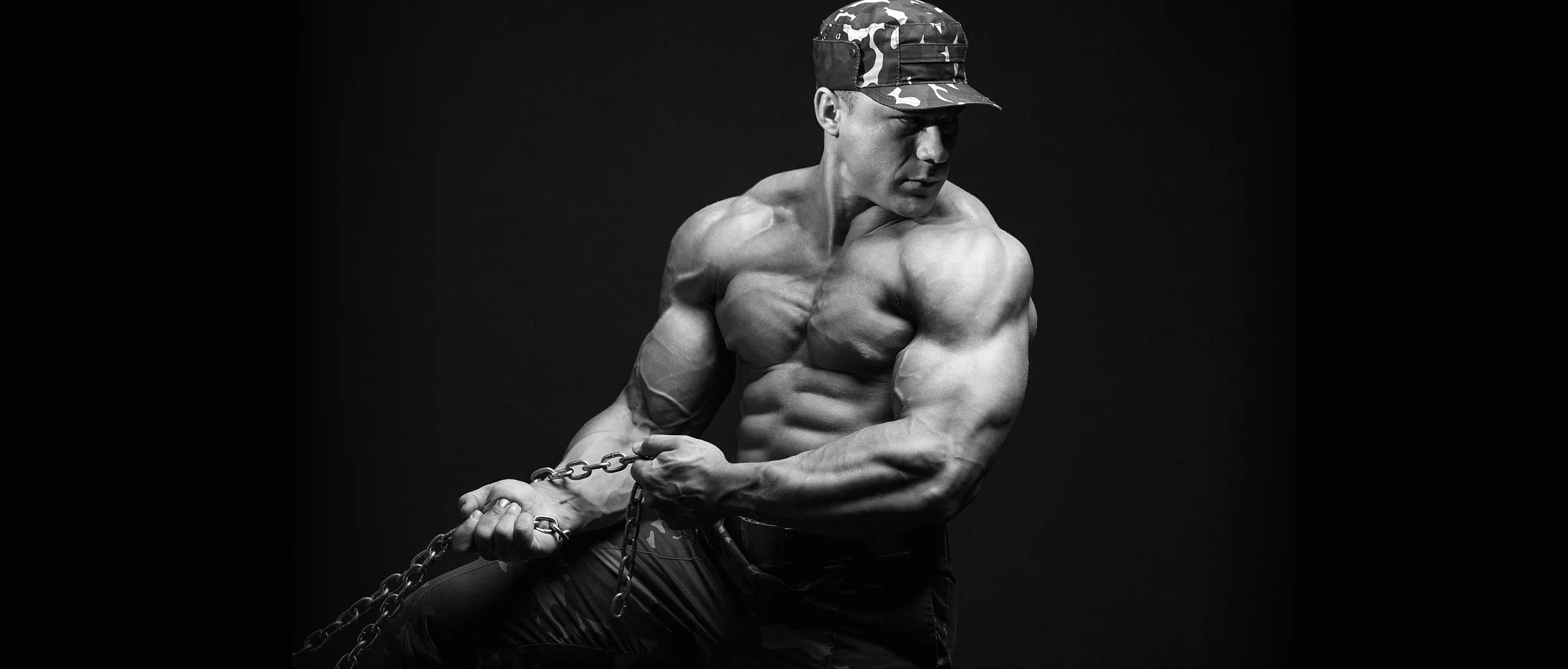Crush Your Back and Glutes with Band-Resisted Inverted Rows
Dr. Joel Seedman, Ph.D.
If you’re looking for one of the most efficient methods for incorporating added resistance to inverted rows try incorporating band resistance while holding a glute bridge position. There are several benefits of this back and glute combination exercise.
1. Although this is technically an upper back movement, performing these from a glute bridge position (particularly on a single leg as shown in the video), absolutely torches the glutes and hamstrings. Essentially the harder you pull with your back and the higher your body moves into the contracted position of the row, the more tension your glutes will be forced to produce to keep your hips from dropping. In fact in the top position of the movement you’ll feel your entire backside from the upper back, down to the glutes and hamstrings maximally contract. Performing inverted rows in a straight leg fashion while more taxing to the upper back (due to the increased percentage of bodyweight that must be lifted), provides less tension to the glutes as the straighter leg position tends to be more hamstring dominant with less glute activation. The increased band tension allows overload to the upper back while maintaining a more glute dominant position.
2. Although using accommodating resistance is typically applied to pressing movements particularly for the upper body, implementing it periodically on rows forces the lifter to be very powerful and explosive in order to blast through the bands. If the lifter does not use high power output and hyper-activate their nervous system during the row, they’ll find themselves hitting a wall and getting stuck half-way through the concentric phase of the exercise. Once you incorporate band resistance for pulling movements you’ll find you have improved power output on other rowing exercises ultimately allowing you to handle heavier loads resulting in increased growth. As an added bonus the tension in the fully contracted position (at the top of the row) is incredibly high. If you can hold this for several seconds on each rep, the amount of tension produced throughout your back will be enough to trigger muscle growth even in the most stubborn body.
3. Performing bent leg inverted rows with band resistance is one of the best methods I’ve found for adding increased tension to inverted rows. Many lifters have difficulty with a straight leg position on inverted rows as it requires greater motor control, precise positioning and subtle body adjustments. For example if your feet are too far out in front of the bar this can cause the elbows to excessively flare as the bar placement is too close to the neck (similar to a guillotine press). If the feet are too close to the bar, the shoulders will feel crowded when rowing into the top position thereby causing slight internal rotation of the glenohumeral joint.
The bent leg position tends to be significantly easier to execute as the lifter can adjust his or her body forward or backward by simply by moving their feet until the bar is perfectly positioned relative to their torso. Unfortunately the bent leg inverted row does not provide ample tension for more advanced lifters as the load is approximately 30% less than the straight leg variation. Although external loading can be used, adding weight plates is not an ideal option as the decline angle of the torso can cause the weights to slide back into the lifters face. However, by applying band resistance to the bent leg positions we can safely use added resistance and perfectly modify the bent leg inverted row to provide maximal tension while still maintaining its user-friendly setup.
Several sets of 6-10 repetitions (3-5 per leg) will suffice for this movement. In addition try super-setting it with a horizontal pressing exercise such as dumbbell bench press or barbell floor press and watch your pressing strength and technique improve.



















